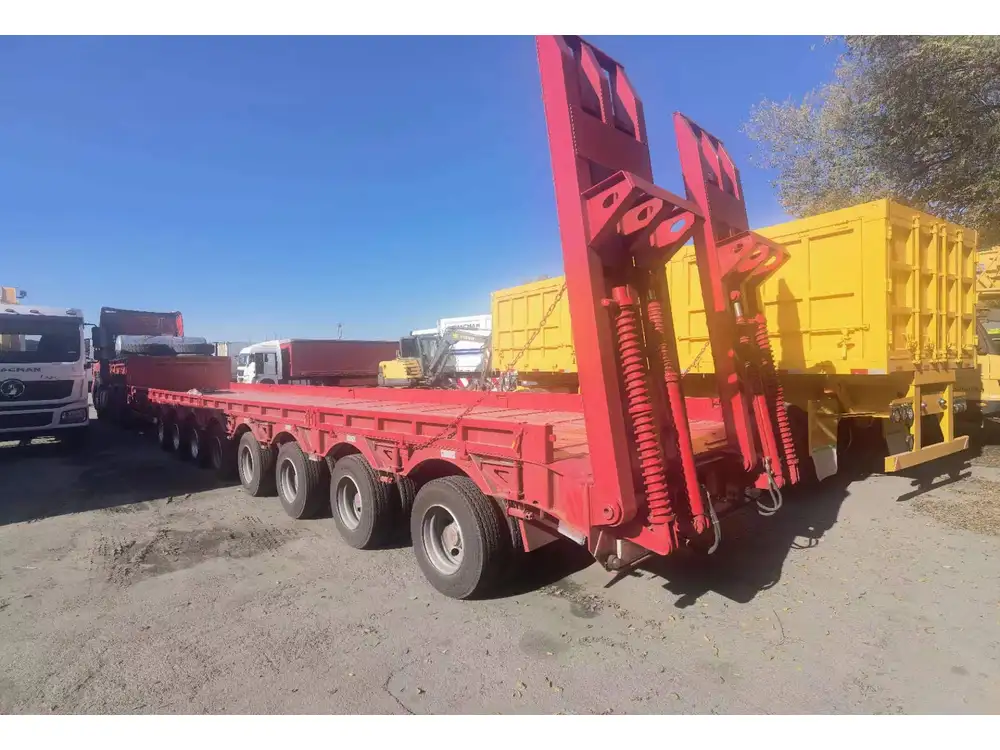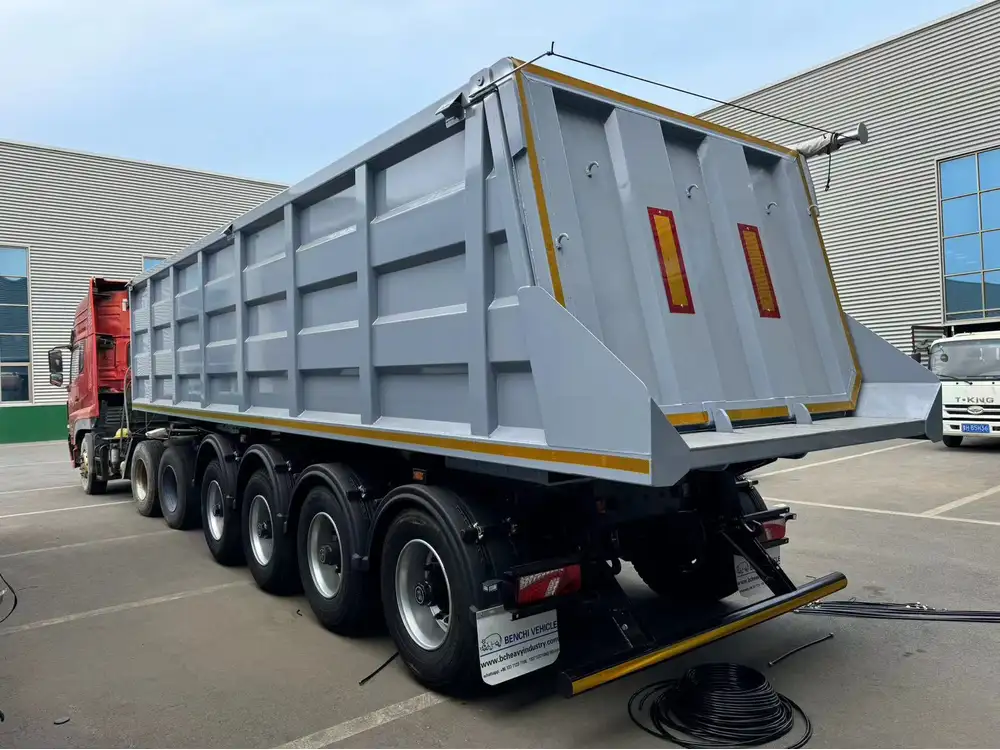Introduction to 3 Axle 40ft Skeletal Container Trailers
In the world of freight transportation, efficiency and durability are key components that influence logistics operations. The 3 axle 40ft skeletal container trailer stands out as a pivotal instrument in optimizing the movement of goods. Designed to accommodate various shipping container sizes with a robust structural integrity, these trailers are instrumental for manufacturers and logistics companies.
Understanding Skeletal Trailers
A skeletal trailer is specifically designed to carry containers without traditional box structures. Instead, it features a minimalist framework that securely holds containers in place while providing excellent stability and flexibility on the road. This approach significantly reduces overall trailer weight, allowing for higher payload capacities and improved fuel efficiency.

Key Advantages of 3 Axle 40ft Skeletal Container Trailers
Enhanced Load Capacity
The 3 axle configuration distributes weight more evenly, enabling the transportation of heavier loads compared to single or double-axle setups. Given that these trailers effectively accommodate full 40ft containers, they maximize payload abilities without compromising safety or legal weight limits.
| Trailer Type | Load Capacity | Axle Count |
|---|---|---|
| 3 Axle | Up to 30,000 kg | 3 |
| 2 Axle | Up to 20,000 kg | 2 |
| 1 Axle | Up to 10,000 kg | 1 |
Stability and Maneuverability
Loading and unloading operations are facilitated by the stability offered by a tri-axle setup. It minimizes the risk of tipping and maintains control during sharp turns. The added weight distribution benefits significantly during transit over rough terrains, ensuring cargo integrity and trailer durability.

Versatility in Transportation
The design of the 3 axle trailer allows compatibility with various container types, including standard dry containers, refrigerated units, and open top containers. This versatility makes it an indispensable tool for logistics and shipping companies responding to diverse freight handling requirements.
Cost Efficiency
Investing in sleeker, more optimized trailers like these can significantly cut fuel costs and increase overall operational efficiency. With less resistance and improved aerodynamics, companies see a noticeable decrease in fuel consumption rates.
Structural Components of a 3 Axle 40ft Skeletal Container Trailer

Frame Construction
The backbone of the skeletal container trailer is its frame, typically constructed from high-tensile steel or aluminum alloys. The frame must withstand the harsh conditions of open-road transportation while maintaining a lightweight structure. Key specifications often include:
- Material Type: High-tensile steel or aluminum
- Weight: Generally ranging from 5,000 kg to 7,000 kg
- Design: Open skeletal frame with tie-down points
Axle System
The 3 axle system enhances load distribution which in turn stabilizes the trailer. Common specifications include:
- Axle Capacity: Each axle can handle roughly 10,000 kg
- Suspension Type: Air suspension for ride comfort and load stability
Loading Mechanisms
A well-engineered locking system ensures that containers remain secure when loaded. These systems often feature:
- Twist Locks: Automatic locking mechanisms that engage once the container is lowered onto the frame
- Safety Straps: Auxiliary strapping systems that further secure the container during transit

Choosing the Right 3 Axle Skeletal Container Trailer
Factors to Consider
When selecting a 3 axle 40ft skeletal container trailer, there are several essential factors to analyze. Below are some of the key considerations:
- Payload Requirements: Ascertain the maximum weight you need to transport.
- Container Types: Ensure compatibility with the specific types of containers in your fleet.
- Road Conditions: Decide between standard or heavy-duty configurations based on anticipated road conditions.
- Manufacturer Reputation: Opt for reputable manufacturers known for quality and durability.
Recommended Features
Investing in a skeletal container trailer with multiple extensions and modifications can improve utility. Consider the following features:
- Extendable Frames: To accommodate larger containers if necessary.
- Side Guards: To enhance safety for other road users.
- Anti-lock Braking System (ABS): For improved stopping power and trailer control on slippery surfaces.
- Weatherproofing: Rust-proof finishes and protective coatings to withstand various environmental conditions.

Maintenance Insights for 3 Axle Skeletal Container Trailers
Maintaining a skeletal container trailer is vital for ensuring operational efficiency and durability over time. Here are fundamental maintenance practices:
Routine Inspections
Conduct systematic inspections every vehicle operation cycle to identify issues. Key areas to scrutinize include:
- Axles and Suspension: Inspect for wear and proper alignment.
- Frame Condition: Look for signs of corrosion and integrity breaches.
- Tire Checks: Ensure appropriate inflation and tread depth.
Scheduled Servicing
Routine servicing enhances the longevity of the trailer. This includes:
- Lubricating Moving Parts: Periodic lubrication keeps components functioning smoothly.
- Brake System Check: Inspect and adjust brakes regularly to ensure effective stopping power.
- Replacing Worn Components: Proactive replacement can prevent catastrophic failures.

The Environmental Impact of 3 Axle 40ft Skeletal Container Trailers
Fuel Efficiency and Emission Standards
Modern skeletal trailers significantly reduce fuel consumption compared to traditional transportation methods. By ensuring lightweight designs and better aerodynamics, the trailers contribute to lowering carbon emissions.
Sustainable Practices
Incorporating sustainable practices in the manufacturing and operation of 3 axle skeletal trailer systems can mitigate their environmental footprint. Some leading practices include:
- Use of Recyclable Materials: Opt for manufacturers who utilize sustainable materials in trailer production.
- Eco-friendly Paints: Reducing harmful chemical emissions through environmentally friendly coatings.

Case Studies: Successful Implementation of 3 Axle Trailers
Case Study 1: Logistics Industry
A prominent logistics company integrated 3 axle 40ft skeletal container trailers into their fleet, which resulted in a 20% increase in delivery efficiency. By optimizing payload capacities, the company achieved better economies of scale and improved customer satisfaction through timely deliveries.
Case Study 2: Construction Sector
A construction firm used 3 axle skeletal trailers to transport heavy equipment across challenging terrains. By leveraging the stability and loading capabilities of these trailers, they minimized equipment damage and expedited project timelines.

Conclusion: Maximizing the Advantages of 3 Axle Skeletal Container Trailers
The utility of 3 axle 40ft skeletal container trailers cannot be overstated. Their combination of enhanced load capacity, stability, and fuel efficiency makes them essential for many sectors. Whether your needs are for logistics, construction, or any other industry reliant on container transport, investing in these trailers can yield significant dividends.
By continually weighing the pros, maintenance needs, and environmental impacts, stakeholders can make informed decisions ensuring operational excellence. Embracing this powerful transportation solution can lead to an improved bottom line while promoting sustainable practices in the freight industry.
For those in the market, consider reaching out for customized solutions tailored to specific operational needs, ensuring you take full advantage of what a 3 axle 40ft skeletal container trailer has to offer. Through optimized logistics and strategic investments, we can navigate an ever-evolving transportation landscape with confidence.



